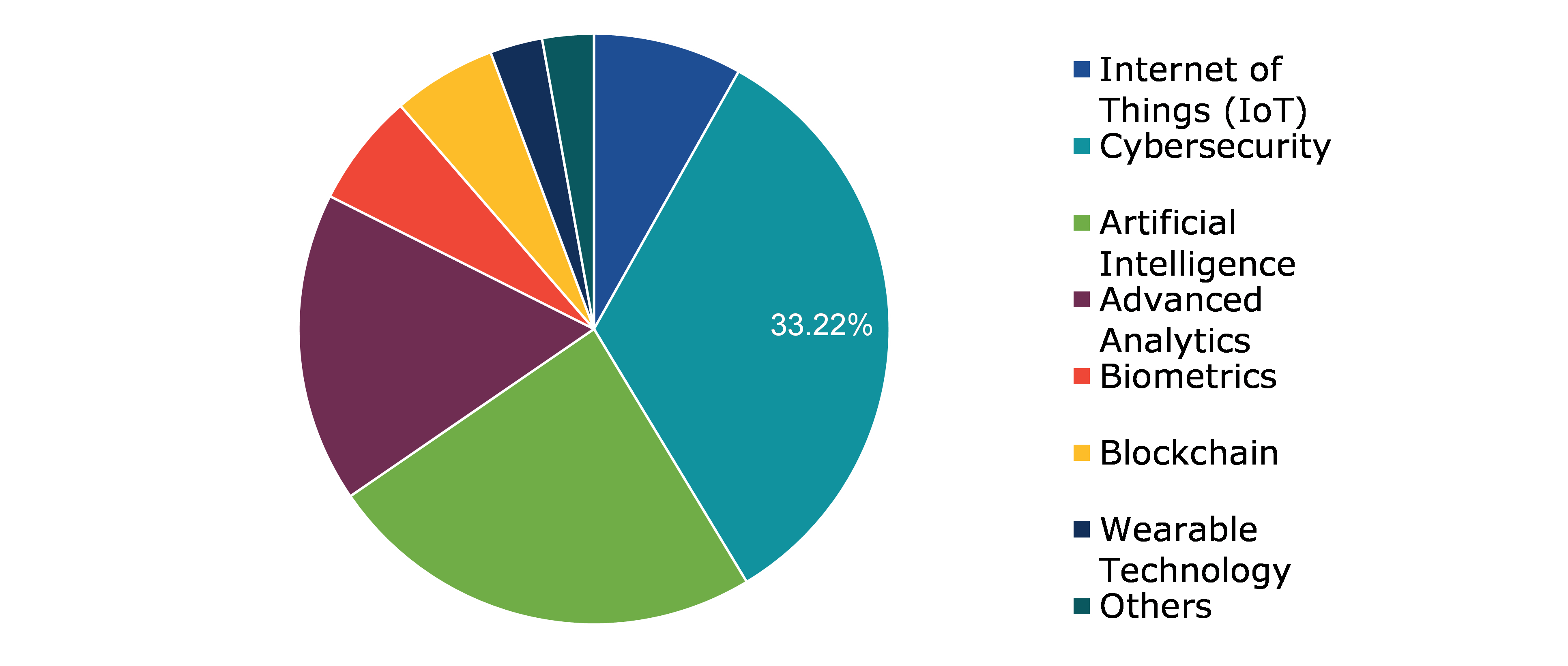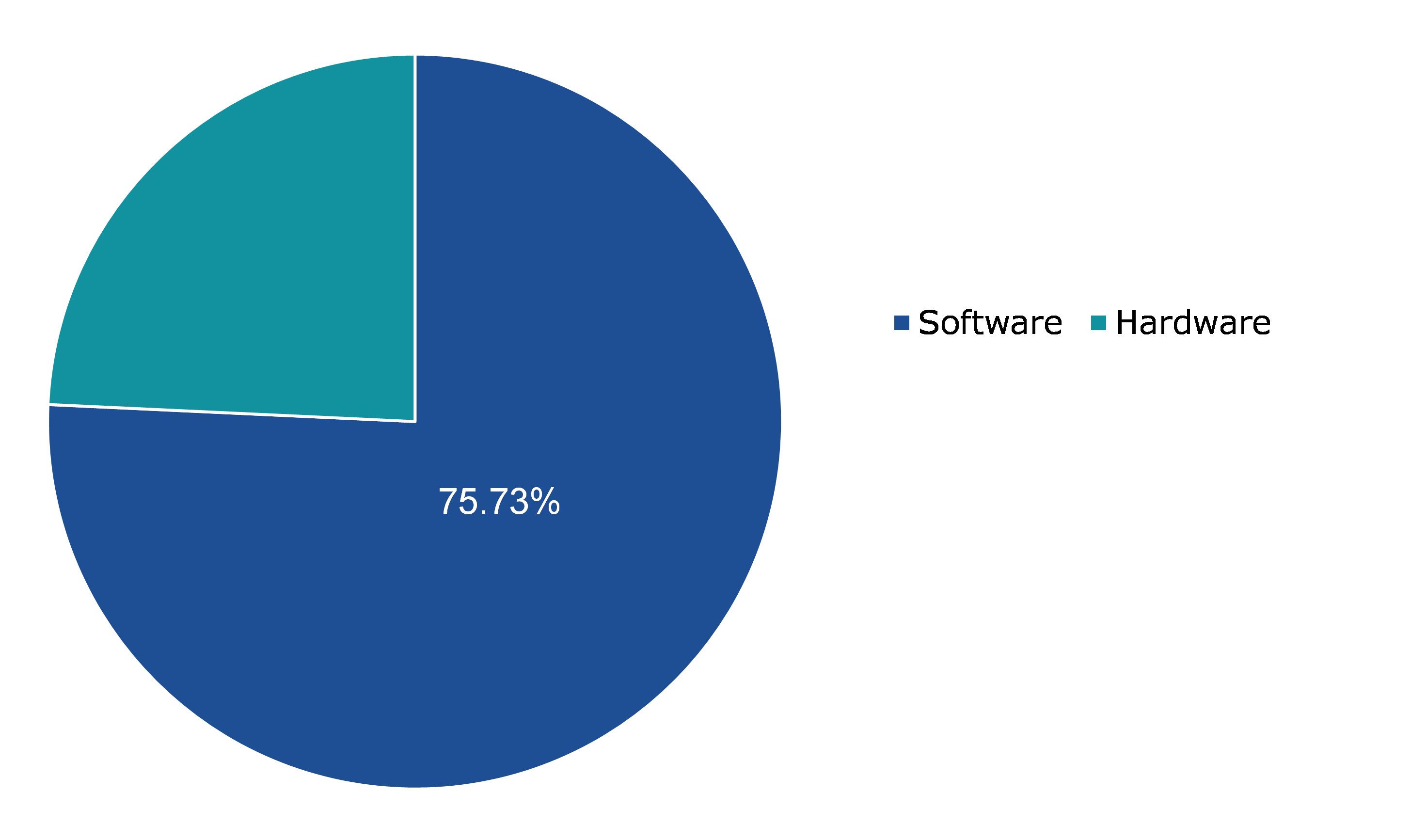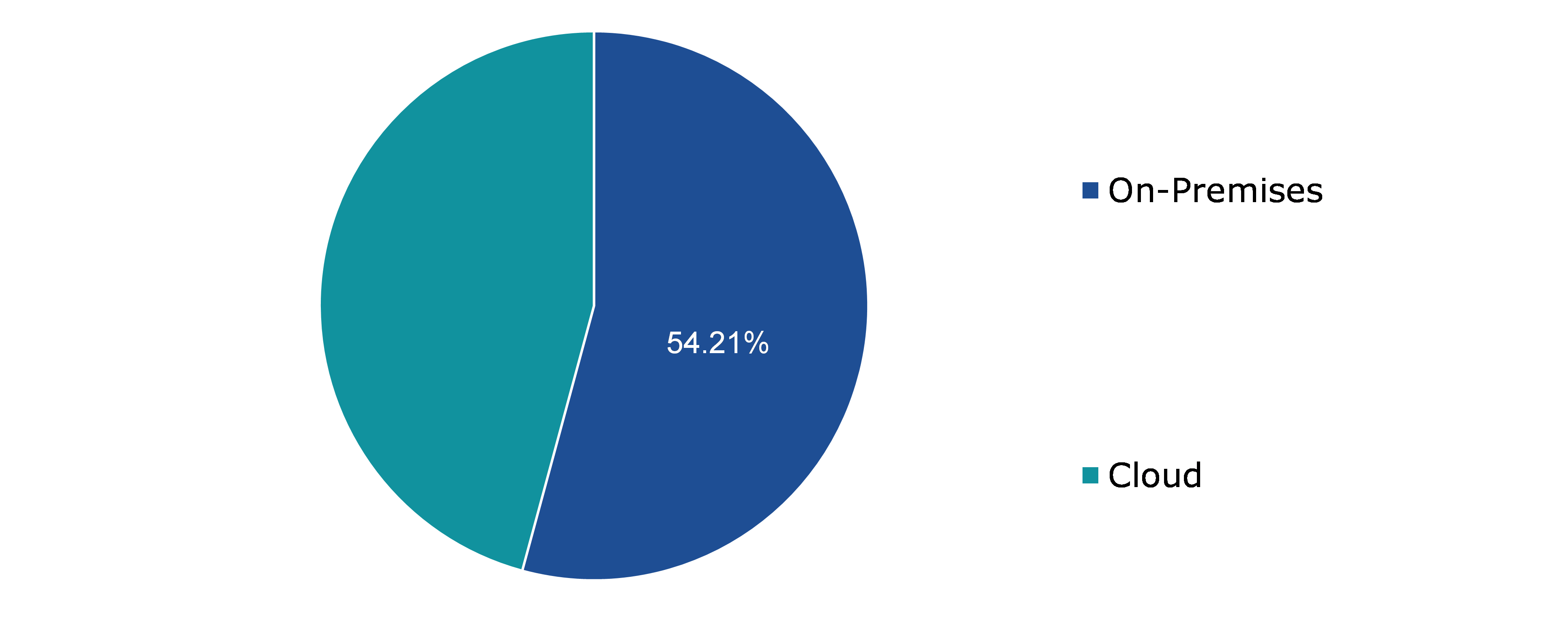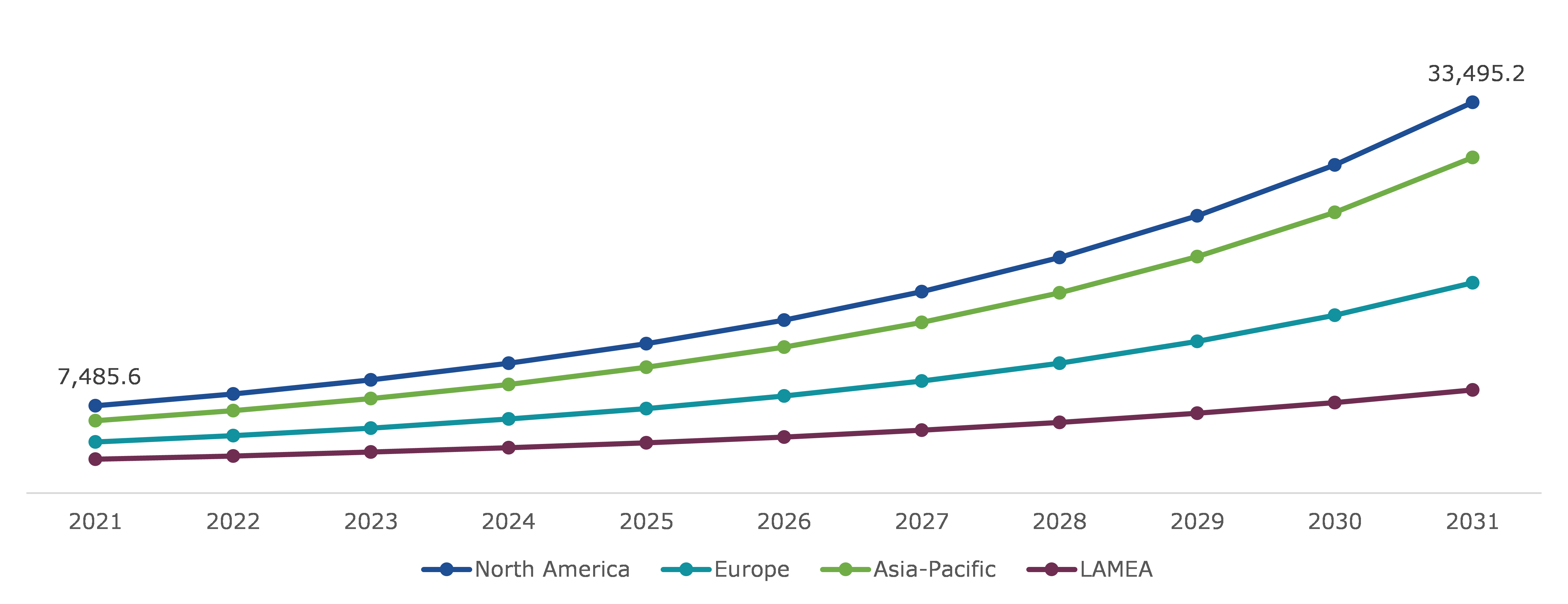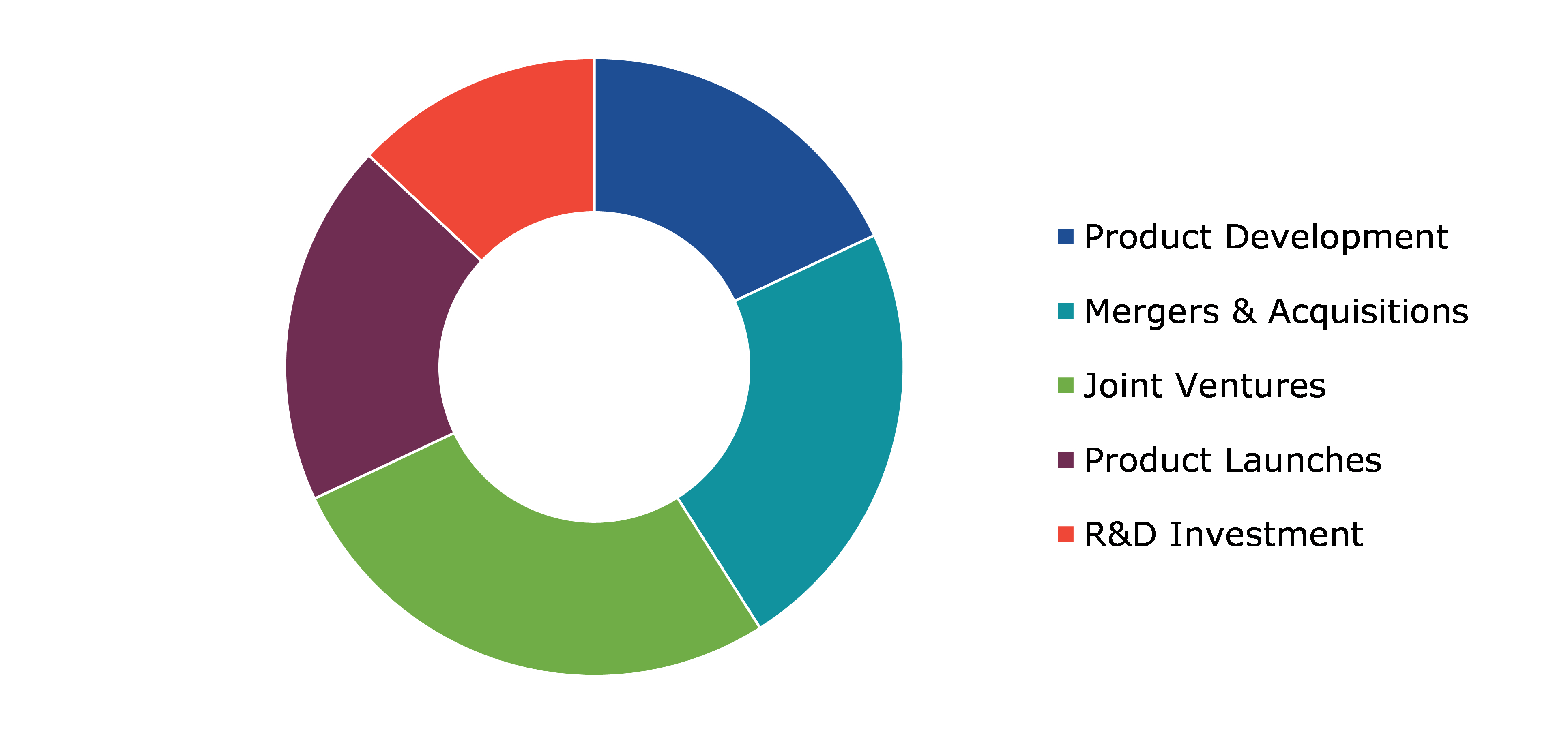Airline Technology Integration Market Report
RA08629
Airline Technology Integration Market by Technology (Internet of Things (IoT), Cybersecurity, Artificial Intelligence, Advanced Analytics, Biometrics, Blockchain, Wearable Technology, and Others), Offering (Software and Hardware), Deployment (On-premises and Cloud), and Regional Analysis (North America, Europe, Asia-Pacific, and LAMEA): Global Opportunity Analysis and Industry Forecast, 2022-2031
Global Airline Technology Integration Market Analysis
The Global Airline Technology Integration Market Size was $20,956.4 million in 2021 and is predicted to grow with a CAGR of 15.90%, by generating a revenue of $89,130.4 million by 2031.
Global Airline Technology Integration Market Synopsis
It is anticipated that the global airline technology integration industry will expand during the coming years due to increase in disposable income and rising travel demand. The airline technology industry is caught in the crossfire of a global backlash over harmful emissions levels. The industry is addressing this issue by investing in alternative sustainable fuels, electric propulsion, and other technologies. These steps, however, will not be realized and applied for a very long time. Airlines are currently introducing solutions that are integrated with ML algorithms to optimize operations, resulting in lower costs and emissions. An increase in tourist spending on air travel is another factor driving the airline technology integration industry expansion.
High operational costs are one of the major drawbacks of air travel. Fuel, aircraft maintenance, and airport taxes are all included. Another downside is that planes must undergo regular planned maintenance, to avoid failure risks midair.
Airline technology integration businesses are interested in installing connected sensors to their commercial jetliners in order to improve their predictive maintenance capabilities, in addition to the on-the-ground applications of IoT systems. Massive operational data can be gathered and analyzed to reveal an excess of information about how certain planes are operating and whether any minor technical faults have been found. This helps airline managers ensure all equipment and flight systems are functioning properly.
According to regional analysis, the North America airline technology integration market dominated the global revenue in 2021 and is predicted to grow in the projected timeframe. This is because in the U.S., the use of airline technology integration as in transportation is under large-scale development as the number of airline technology integration-powered airplanes in the U.S. is increasing rapidly.
Airline Technology Integration Overview
Some airlines use outdated systems for their essential IT requirements. Digital solutions are being created by solution providers to help airlines overcome this difficulty. The airline industry has encountered numerous cyber dangers, and as a result, Airline technology company attention is now focused on cybersecurity. In such a situation, airlines are attempting to find their way in the new digital era. Hyper-personalization and operational optimization are two major areas of focus for airlines worldwide.
COVID-19 Impact on Global Airline Technology Integration Industry Market
The COVID-19 pandemic had a substantial impact on several sectors and on the society as well. Airlines faced billions in economic losses in 2020. Although it is tempting to blame the airline industry's underlying and long-term problems only on the pandemic-induced drop in passenger traffic, doing so would be ignoring the airline industry's underlying and long-term concerns. The pandemic resulted in a decrease in the number of flights and passengers due to travel restrictions. Utilizing efficient methods to evaluate and address the COVID-19 pandemic's ambiguous hazards will aid in the recovery and long-term development of the aviation industry and allied sectors.
Increase in Applications of Airline Technology Integration in the Aviation Sector to Drive the Market Growth
More airports and airlines are set to use artificial intelligence and cutting-edge data management systems as technology advances and the aviation industry faces a compelling need to increase efficiency. Specifically, industry participants should use technology to improve communication about anticipated disruptions and changing flight itineraries. Machine learning algorithms can anticipate future delays when air traffic control, airlines, pilots, and airports all integrate their data into a single comprehensive solution. By alerting customers in advance to probable flight delays, these forecasts will enhance the customer experience and enable all stakeholders to modify their technology. Airlines and airports will grow by improving their applications to incorporate more streamlined, comprehensive information for travelers in light of technological advancements and changing customer expectations.
To know more about global airline technology integration market drivers, get in touch with our analysts here.
Growing Autopilot Failures to Restrain Market Growth
Aircraft failure can result in potentially significant accidents, making this technology risky and unreliable. Multiple internal DC power supply in Flight computers sometimes fail. They could be temperature-sensitive cold or hot, breaking down at a particular temperature. There are a lot of other factors, though, that could be causing the failure in autopilot because of the vast internal computer monitoring. Such factors are likely to impede airline technology integration market share growth in the future.
To know more about global airline technology integration market drivers, get in touch with our analysts here.
Advancements in Technology in Aviation Sector to Provide Growth Opportunities for Market Players in Future
In the coming years, the airline sector will rely on digital solutions like the Internet of Things (IoTs) and big data analytics. The increase in cooperation across hardware, software, and integration suppliers to meet business objectives and deliver unbroken services globally may create new market growth opportunities. Deploying AI-based check-in counters at airports and appropriate health screening technology will also drive the industry growth prospects during the forecast period. Additionally, by using big data analytics and the IoTs, airline companies. Worldwide, new AI technology is revolutionizing aviation travel. It aids in improving security and efficiency of aircraft operations. It is continuously improving the travel experience of customers, from quicker check-ins and a better airport experience to advancements that make flying more enjoyable and pleasant.
To know more about global airline technology integration market opportunities, get in touch with our analysts here.
Global Airline Technology Integration Market, by Technology
Based on technology, the market has been divided into Internet of Things (IOT), cybersecurity, artificial intelligence, advanced analytics, biometrics, blockchain, wearable technology, and others. Among these, the cybersecurity sub-segment accounted for the highest market share in 2021 whereas the artificial intelligence sub-segment is estimated to witness the fastest growth during the forecast period.
Global Airline Technology Integration Market Size, by Technology, 2021
Source: Research Dive Analysis
The cybersecurity segment had a dominant market share in 2021. The safety of passengers is the main concern in the airline business. Although a cyber threat is becoming another concern as it is having an impact on a variety of technologies used by airports and airlines. Thus, unforeseen attacks like ransomware may pose some of the highest risks.
The artificial intelligence subsegment is predicted to have the fastest growth in the forecast time period. In the aviation business, AI is being investigated by R&D and integrated into a variety of sectors, such as customer service, airport, and flight operations. Over the next fifteen years, it is anticipated that the cost of airport expansion, specifically the upkeep and modernization of current infrastructure, will approach $1 trillion. Although the top commercial passenger airlines were among the first to use AI, industry estimates show that the economic environment is favorable for innovation and automation.
Global Airline Technology Integration Market, by Offering
Based on offering, the market has been divided into software and hardware. Among these, the software sub-segment accounted for the highest revenue share in 2021.
Global Airline Technology Integration Market Share, by Offering, 2021
Source: Research Dive Analysis
The software sub-segment had a dominant market share in 2021. An integrated web-centric business process-oriented airline software system known as the Airline Software Suite is available for on-premises or cloud installation. The full range of airline maintenance activities, including engine maintenance, technical records, human resource management, inventories, purchasing, financials, dependability, and engineering, are catered for by this system. Additionally, it is intended to support airline discipline by disseminating consistent data across multiple business units that facilitate better decision-making.
Global Airline Technology Integration Market, by Deployment
Based on deployment, the market has been divided into on-premises and cloud. Among these, the on-premises sub-segment accounted for the highest revenue share in 2021.
Global Airline Technology Integration Market Growth, by Deployment, 2021
Source: Research Dive Analysis
The on-premises sub-segment had a dominant market share in 2021. Using predictive and prescriptive analytics, airline analytics products and services assist in increasing performance by reducing costs and downtime. These solutions are primarily deployed using the on-premises approach because end users choose internal software infrastructure and services to guarantee high levels of data protection. Due to this, several huge airports use aviation analytics on-site rather than cloud-based ones. On-premises aviation analytics systems are more expensive, which prevents small airports and airline companies from implementing them.
Global Airline Technology Integration Market, Regional Insights
The airline technology integration market was investigated across North America, Europe, Asia-Pacific, and LAMEA.
Global Airline Technology Integration Market Size & Forecast, by Region, 2021-2031 (USD Million)
Source: Research Dive Analysis
The Market for Airline Technology Integration in North America to be the Most Dominant
North America had a dominating market share in 2019 and is expected to dominate the market over the foreseeable future. This will be mostly due to increase in spending by major U.S. firms including Ametek, Amphenol Corporation, Astronicas Corporation, GE Aviation, Honellywell International Inc., and others, as well as rising air passenger numbers in the U.S. and Canada. One of the biggest aviation markets in the world is the U.S. The U.S. Bureau of Transportation Statistics reports that the country's airlines carried 674 million passengers from 2020 to 2021.
Competitive Scenario in the Global Airline Technology Integration Market
Product development and mergers & acquisitions are common strategies followed by the major market players. For instance, on February 8, 2023, Federal Aviation Administration ‘(FAA) has approved new software enabling integration of Garmin’s GFC600 digital autopilot with Aspen Avionics EFD1000 Pro MAX Primary Flight Display (PFD), selected altitude support for Trio and the Bendix/King AeroCruze 100 autopilots, and extended runway centerlines on the MFD500/1000 MAX multi-function displays’.
Source: Research Dive Analysis
Some of the leading airline technology integration market players are Airbus, Boeing, Collins Aerospace, General Electric, Honeywell International Inc., IBM, L3Harris Technologies, Inc., Lufthansa Technik, Oracle, and SAP SE.
| Aspect | Particulars |
| Historical Market Estimations | 2019-2020 |
| Base Year for Market Estimation | 2021 |
| Forecast Timeline for Market Projection | 2022-2031 |
| Geographical Scope | North America, Europe, Asia-Pacific, and LAMEA |
| Segmentation by Technology |
|
| Segmentation by Offering |
|
| Segmentation by Deployment |
|
| Key Companies Profiled |
|
Q1. What is the size of the global airline technology integration market?
A. The size of the global airline technology integration market was over $20,956.4 million in 2021 and is projected to reach $89,130.4 million by 2031.
Q2. Which are the major companies in the airline technology integration market?
A. Airbus, Boeing, and Collins Aerospace are some of the key players in the global airline technology integration market.
Q3. Which region, among others, possesses greater investment opportunities in the near future?
A. North America possesses great investment opportunities for investors in the future.
Q4. What will be the growth rate of the North America airline technology integration market?
A. North America airline technology integration market is anticipated to grow at 16.5% CAGR during the forecast period.
Q5. What are the strategies opted by the leading players in the market?
A. Product development and mergers & acquisitions are the two key strategies opted by the operating companies in the market.
Q6. Which companies are investing more on R&D practices?
A. Airbus, Boeing, and Collins Aerospace are the companies investing more on R&D activities for developing new products and technologies.
1.Research Methodology
1.1.Desk Research
1.2.Real time insights and validation
1.3.Forecast model
1.4.Assumptions and forecast parameters
1.5.Market size estimation
1.5.1.Top-down approach
1.5.2.Bottom-up approach
2.Report Scope
2.1.Market definition
2.2.Key objectives of the study
2.3.Report overview
2.4.Market segmentation
2.5.Overview of the impact of COVID-19 on Global Airline Technology Integration market
3.Executive Summary
4.Market Overview
4.1.Introduction
4.2.Growth impact forces
4.2.1.Drivers
4.2.2.Restraints
4.2.3.Opportunities
4.3.Market value chain analysis
4.3.1.List of raw material suppliers
4.3.2.List of manufacturers
4.3.3.List of distributors
4.4.Innovation & sustainability matrices
4.4.1.Technology matrix
4.4.2.Regulatory matrix
4.5.Porter’s five forces analysis
4.5.1.Bargaining power of suppliers
4.5.2.Bargaining power of consumers
4.5.3.Threat of substitutes
4.5.4.Threat of new entrants
4.5.5.Competitive rivalry intensity
4.6.PESTLE analysis
4.6.1.Political
4.6.2.Economical
4.6.3.Social
4.6.4.Technological
4.6.5.Environmental
4.7.Impact of COVID-19 on Airline Technology Integration market
4.7.1.Pre-covid market scenario
4.7.2.Post-covid market scenario
5.Airline Technology Integration Market Analysis, by Technology
5.1.Overview
5.2.Internet of Things (IoT)
5.2.1.Definition, key trends, growth factors, and opportunities
5.2.2.Market size analysis, by region
5.2.3.Market share analysis, by country
5.3.Cybersecurity
5.3.1.Definition, key trends, growth factors, and opportunities
5.3.2.Market size analysis, by region
5.3.3.Market share analysis, by country
5.4.Artificial Intelligence
5.4.1.Definition, key trends, growth factors, and opportunities
5.4.2.Market size analysis, by region
5.4.3.Market share analysis, by country
5.5.Advanced Analytics
5.5.1.Definition, key trends, growth factors, and opportunities
5.5.2.Market size analysis, by region
5.5.3.Market share analysis, by country
5.6.Biometrics
5.6.1.Definition, key trends, growth factors, and opportunities
5.6.2.Market size analysis, by region
5.6.3.Market share analysis, by country
5.7.Blockchain
5.7.1.Definition, key trends, growth factors, and opportunities
5.7.2.Market size analysis, by region
5.7.3.Market share analysis, by country
5.8.Wearable Technology
5.8.1.Definition, key trends, growth factors, and opportunities
5.8.2.Market size analysis, by region
5.8.3.Market share analysis, by country
5.9.Others
5.9.1.Definition, key trends, growth factors, and opportunities
5.9.2.Market size analysis, by region
5.9.3.Market share analysis, by country
5.10.Research Dive Exclusive Insights
5.10.1.Market attractiveness
5.10.2.Competition heatmap
6.Airline Technology Integration Market Analysis, by Offering
6.1.Software
6.1.1.Definition, key trends, growth factors, and opportunities
6.1.2.Market size analysis, by region
6.1.3.Market share analysis, by country
6.2.Hardware
6.2.1.Definition, key trends, growth factors, and opportunities
6.2.2.Market size analysis, by region
6.2.3.Market share analysis, by country
6.3.Research Dive Exclusive Insights
6.3.1.Market attractiveness
6.3.2.Competition heatmap
7.Airline Technology Integration Market Analysis, by Deployment
7.1.On-Premises
7.1.1.Definition, key trends, growth factors, and opportunities
7.1.2.Market size analysis, by region
7.1.3.Market share analysis, by country
7.2.Cloud
7.2.1.Definition, key trends, growth factors, and opportunities
7.2.2.Market size analysis, by region
7.2.3.Market share analysis, by country
8.Airline Technology Integration Market, by Region
8.1.North America
8.1.1.U.S.
8.1.1.1.Market size analysis, by Technology
8.1.1.2.Market size analysis, by Offering
8.1.1.3.Market size analysis, by Deployment
8.1.2.Canada
8.1.2.1.Market size analysis, by Technology
8.1.2.2.Market size analysis, by Offering
8.1.2.3.Market size analysis, by Deployment
8.1.3.Mexico
8.1.3.1.Market size analysis, by Technology
8.1.3.2.Market size analysis, by Offering
8.1.3.3.Market size analysis, by Deployment
8.1.4.Research Dive Exclusive Insights
8.1.4.1.Market attractiveness
8.1.4.2.Competition heatmap
8.2.Europe
8.2.1.Germany
8.2.1.1.Market size analysis, by Technology
8.2.1.2.Market size analysis, by Offering
8.2.1.3.Market size analysis, by Deployment
8.2.2.UK
8.2.2.1.Market size analysis, by Technology
8.2.2.2.Market size analysis, by Offering
8.2.2.3.Market size analysis, by Deployment
8.2.3.France
8.2.3.1.Market size analysis, by Technology
8.2.3.2.Market size analysis, by Offering
8.2.3.3.Market size analysis, by Deployment
8.2.4.Spain
8.2.4.1.Market size analysis, by Technology
8.2.4.2.Market size analysis, by Offering
8.2.4.3.Market size analysis, by Deployment
8.2.5.Italy
8.2.5.1.Market size analysis, by Technology
8.2.5.2.Market size analysis, by Offering
8.2.5.3.Market size analysis, by Deployment
8.2.6.Rest of Europe
8.2.6.1.Market size analysis, by Technology
8.2.6.2.Market size analysis, by Offering
8.2.6.3.Market size analysis, by Deployment
8.2.7.Research Dive Exclusive Insights
8.2.7.1.Market attractiveness
8.2.7.2.Competition heatmap
8.3.Asia-Pacific
8.3.1.China
8.3.1.1.Market size analysis, by Technology
8.3.1.2.Market size analysis, by Offering
8.3.1.3.Market size analysis, by Deployment
8.3.2.Japan
8.3.2.1.Market size analysis, by Technology
8.3.2.2.Market size analysis, by Offering
8.3.2.3.Market size analysis, by Deployment
8.3.3.India
8.3.3.1.Market size analysis, by Technology
8.3.3.2.Market size analysis, by Offering
8.3.3.3.Market size analysis, by Deployment
8.3.4.Australia
8.3.4.1.Market size analysis, by Technology
8.3.4.2.Market size analysis, by Offering
8.3.4.3.Market size analysis, by Deployment
8.3.5.South Korea
8.3.5.1.Market size analysis, by Technology
8.3.5.2.Market size analysis, by Offering
8.3.5.3.Market size analysis, by Deployment
8.3.6.Rest of Asia-Pacific
8.3.6.1.Market size analysis, by Technology
8.3.6.2.Market size analysis, by Offering
8.3.6.3.Market size analysis, by Deployment
8.3.7.Research Dive Exclusive Insights
8.3.7.1.Market attractiveness
8.3.7.2.Competition heatmap
8.4.LAMEA
8.4.1.Brazil
8.4.1.1.Market size analysis, by Technology
8.4.1.2.Market size analysis, by Offering
8.4.1.3.Market size analysis, by Deployment
8.4.2.Saudi Arabia
8.4.2.1.Market size analysis, by Technology
8.4.2.2.Market size analysis, by Offering
8.4.2.3.Market size analysis, by Deployment
8.4.3.UAE
8.4.3.1.Market size analysis, by Technology
8.4.3.2.Market size analysis, by Offering
8.4.3.3.Market size analysis, by Deployment
8.4.4.South Africa
8.4.4.1.Market size analysis, by Technology
8.4.4.2.Market size analysis, by Offering
8.4.4.3.Market size analysis, by Deployment
8.4.5.Rest of LAMEA
8.4.5.1.Market size analysis, by Technology
8.4.5.2.Market size analysis, by Offering
8.4.5.3.Market size analysis, by Deployment
8.4.6.Research Dive Exclusive Insights
8.4.6.1.Market attractiveness
8.4.6.2.Competition heatmap
9.Competitive Landscape
9.1.Top winning strategies, 2021
9.1.1.By strategy
9.1.2.By year
9.2.Strategic overview
9.3.Market share analysis, 2021
10.Company Profiles
10.1.Airbus
10.1.1.Overview
10.1.2.Business segments
10.1.3.Product portfolio
10.1.4.Financial performance
10.1.5.Recent developments
10.1.6.SWOT analysis
10.2.Boeing
10.2.1.Overview
10.2.2.Business segments
10.2.3.Product portfolio
10.2.4.Financial performance
10.2.5.Recent developments
10.2.6.SWOT analysis
10.3.Collins Aerospace
10.3.1.Overview
10.3.2.Business segments
10.3.3.Product portfolio
10.3.4.Financial performance
10.3.5.Recent developments
10.3.6.SWOT analysis
10.4.General Electric
10.4.1.Overview
10.4.2.Business segments
10.4.3.Product portfolio
10.4.4.Financial performance
10.4.5.Recent developments
10.4.6.SWOT analysis
10.5.Honeywell International Inc
10.5.1.Overview
10.5.2.Business segments
10.5.3.Product portfolio
10.5.4.Financial performance
10.5.5.Recent developments
10.5.6.SWOT analysis
10.6.IBM
10.6.1.Overview
10.6.2.Business segments
10.6.3.Product portfolio
10.6.4.Financial performance
10.6.5.Recent developments
10.6.6.SWOT analysis
10.7.L3Harris Technologies, Inc.
10.7.1.Overview
10.7.2.Business segments
10.7.3.Product portfolio
10.7.4.Financial performance
10.7.5.Recent developments
10.7.6.SWOT analysis
10.8.Lufthansa Technik
10.8.1.Overview
10.8.2.Business segments
10.8.3.Product portfolio
10.8.4.Financial performance
10.8.5.Recent developments
10.8.6.SWOT analysis
10.9.Oracle
10.9.1.Overview
10.9.2.Business segments
10.9.3.Product portfolio
10.9.4.Financial performance
10.9.5.Recent developments
10.9.6.SWOT analysis
10.10.SAP SE
10.10.1.Overview
10.10.2.Business segments
10.10.3.Product portfolio
10.10.4.Financial performance
10.10.5.Recent developments
10.10.6.SWOT analysis
11.Appendix
11.1.Parent & peer market analysis
11.2.Premium insights from industry experts
11.3.Related reports
The airline technology sector is witnessing a period of overhaul due to the emergence of technologies such as Internet of Things (IoT), Artificial Technology, robotics, etc. Airline technology integration in its contemporary sense basically entails use of these advanced technologies in aircrafts to increase the safety, efficiency, and comfort of the passenger during the air travel. Not just airlines, these technologies are also increasingly used in airports to modernize them and manage the air traffic efficiently.
Forecast Analysis of the Airline Technology Integration Market
According to the report published by Research Dive, the global airline technology integration market is expected to gather a revenue of $89,130.4 million by 2031 and grow at 15.90% CAGR in the 2022–2031 timeframe.
In recent years, there has been a steady increase in demand for air travel which is predicted to be the primary growth driver of the airline technology integration market in the forecast period. Additionally, increasing applications of airline technology integration in aviation sector is anticipated to push the market forward. Along with this, advancements in technology in the aviation sector are projected to offer numerous growth and investment opportunities to the market in the analysis timeframe. However, an increase in incidences related to aircraft autopilot failure is estimated to create hurdles in the full-fledged growth of the airline technology integration market in the coming period.
Regionally, the airline technology integration market in the North America region is expected to be the most dominant by 2031. Growing number of air passengers in the US and Canada is expected to be the leading factor behind the growth of the market in this region.
Some prominent market players include Airbus, Honeywell International Inc., Boeing, IBM, Oracle, Collins Aerospace, L3Harris Technologies, Inc., SAP SE, Lufthansa Technik, General Electric, and many others.
Covid-19 Impact on the Market
The outbreak of the Covid-19 pandemic has had a massive negative effect on almost all industries and businesses across the world. The airline technology integration market, too, faced a negative impact of the pandemic. The travel restrictions imposed by various countries crippled the aviation sector completely which resulted in the decline of growth rate of the airline technology integration market during the pandemic.
Significant Market Developments
The significant companies operating in the industry are adopting numerous growth strategies & business tactics such as partnerships, collaborations, mergers & acquisitions, and launches to maintain a robust position in the overall market, thus helping the airline technology integration market to flourish. For instance:
- In January 2020, TWAI, a global leader in travel technology, announced the acquisition of Airlines Technology Pvt. Ltd., an NDC aggregator and solutions provider. This acquisition is expected to increase the footprint of TWAI significantly in the market in the near future.
- In June 2021, KLM Royal Dutch Airlines (KLM), the leading airline carrier of Netherlands, announced that it was partnering with Boston Consulting Group, a management consulting company. This partnership is aimed at launching artificial intelligence-based solutions to modernize KLM’s global airline operations.
- In May 2022, American Airlines, a leading airline based in the US, announced a partnership with Microsoft, a multinational information technology. This collaboration is aimed at developing technologies and tools to better travel experience for American Airlines' customers. The collaboration is anticipated to create tremendous growth opportunities for both the companies in the coming period.
Personalize this research
- Triangulate with your own data
- Request your format and definition
- Get a deeper dive on a specific application, geography, customer or competitor
- + 1-888-961-4454 Toll - Free
- support@researchdive.com


